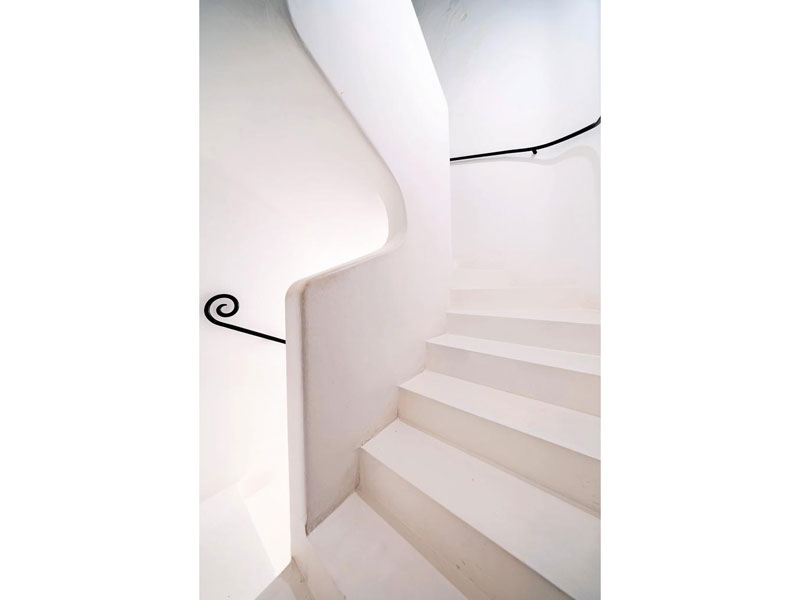
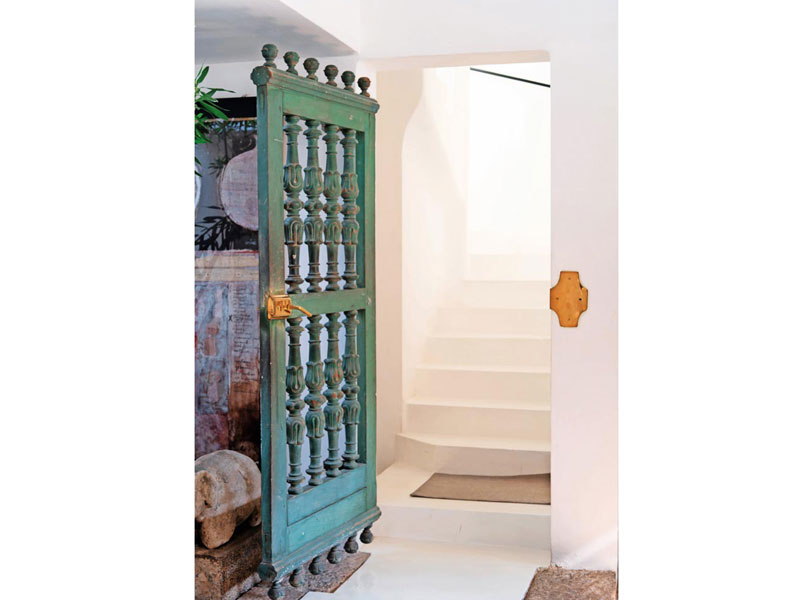
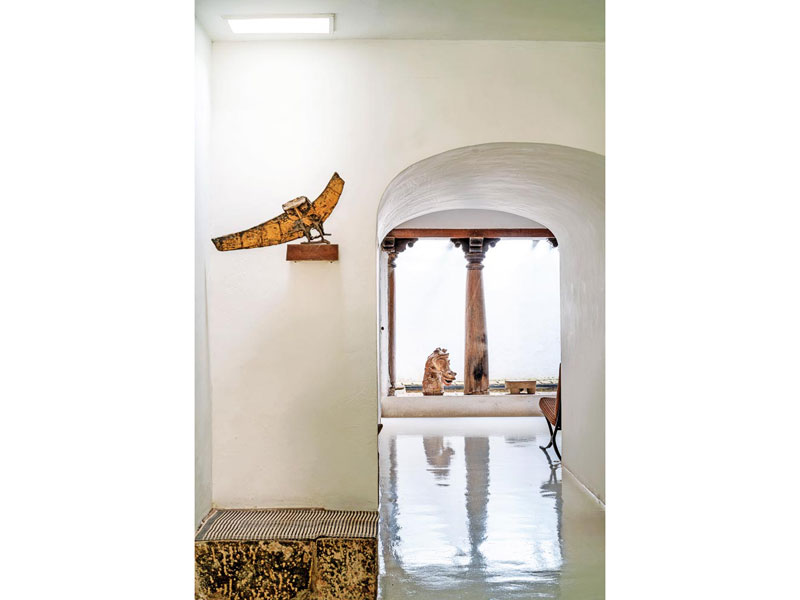
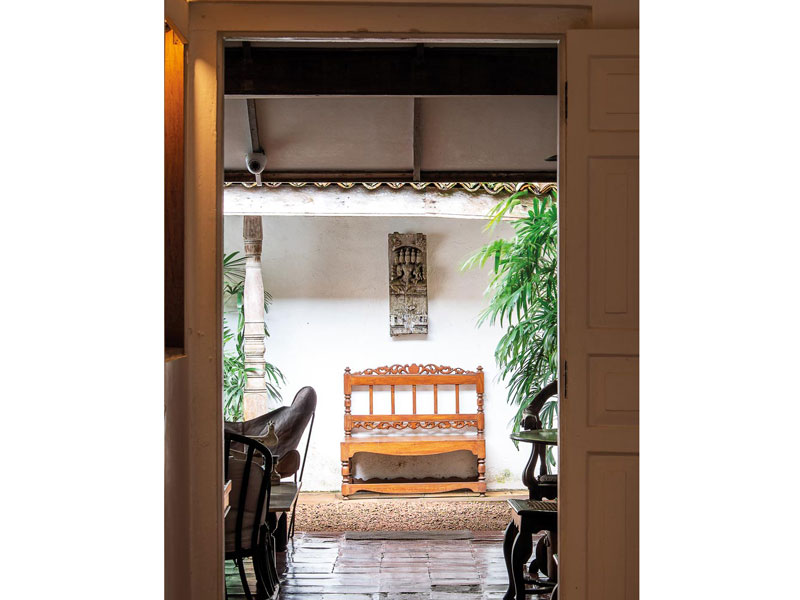



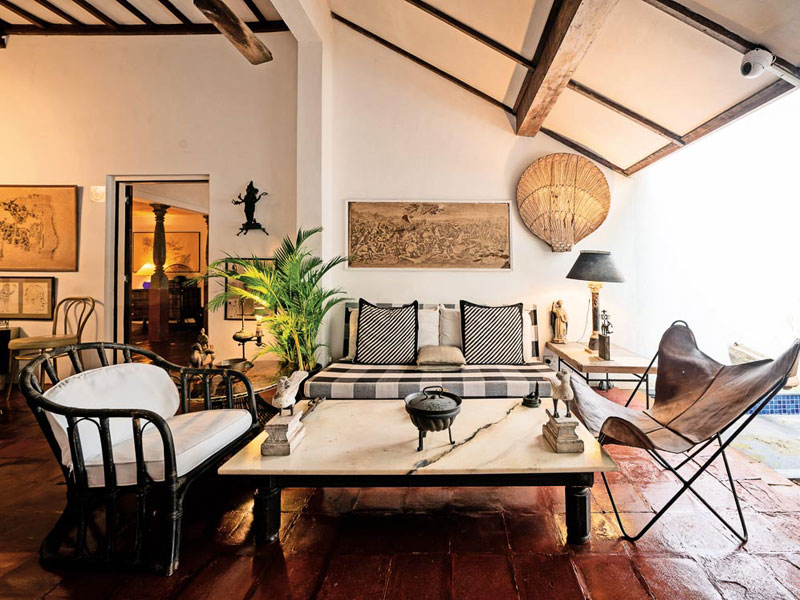
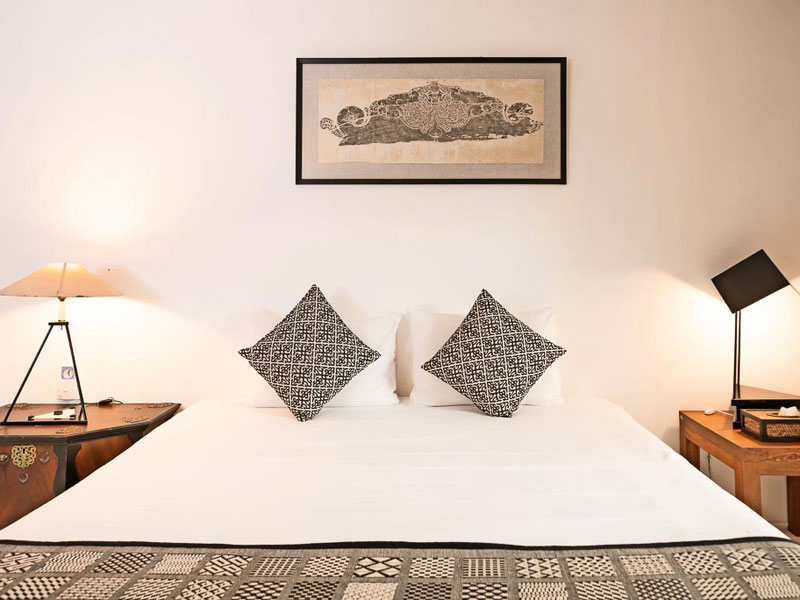
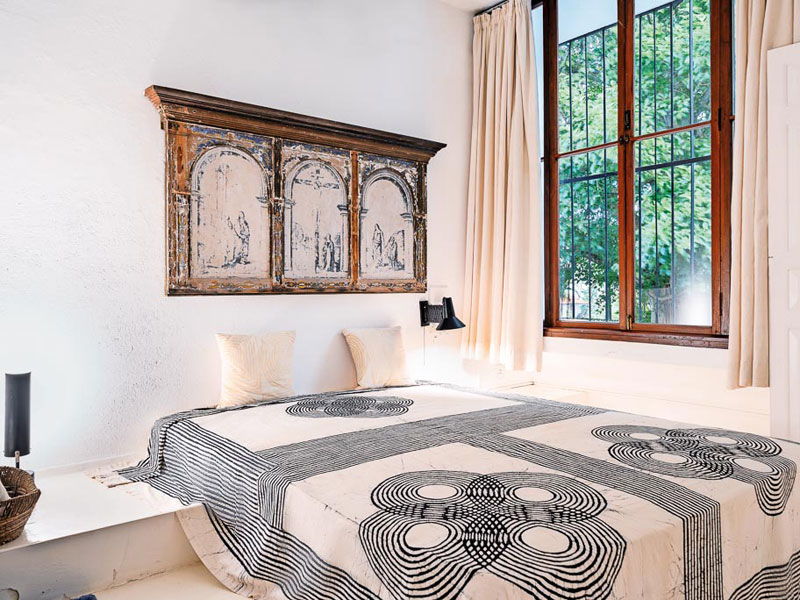
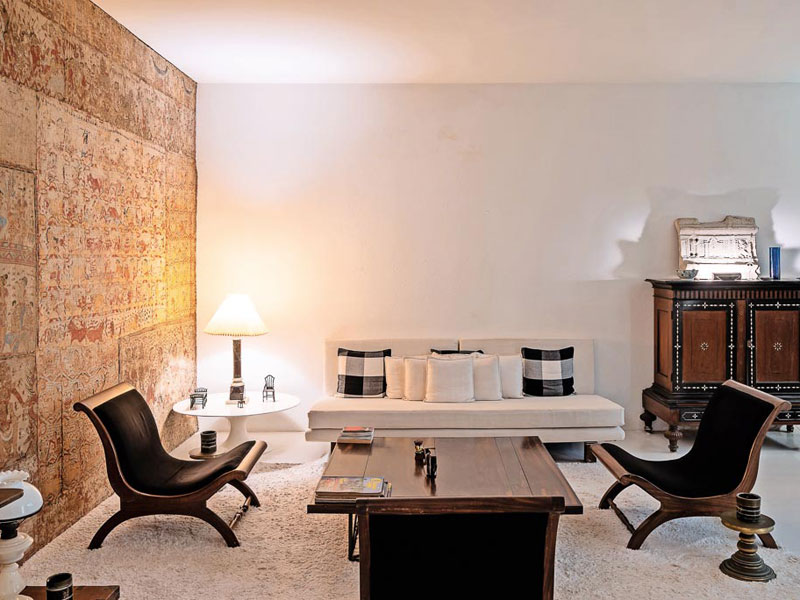

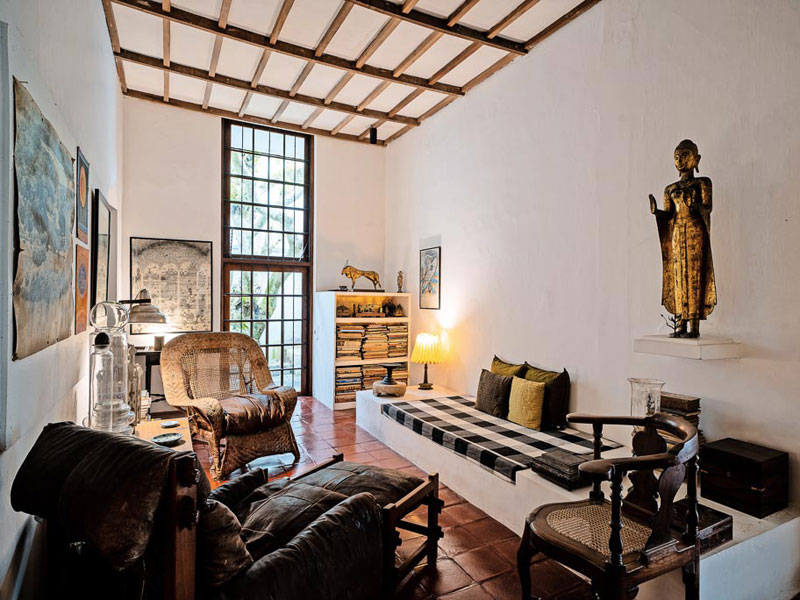
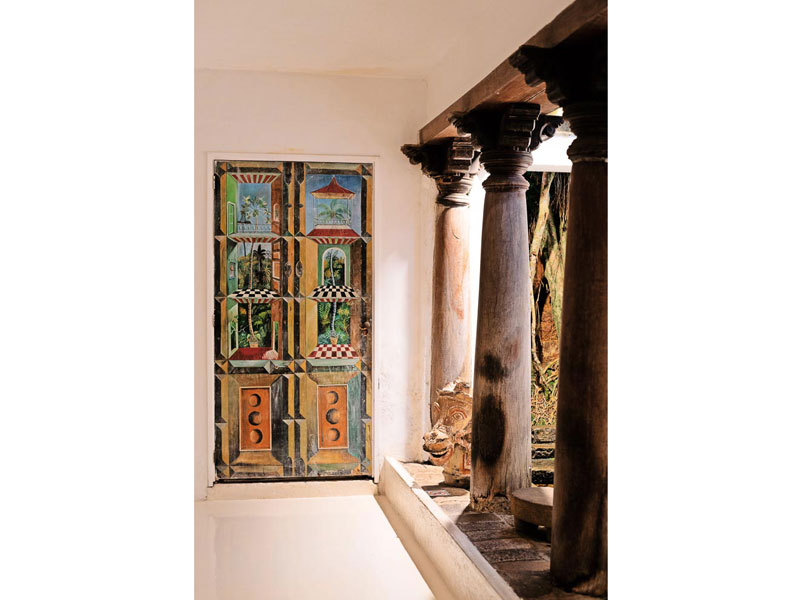

Words: Amrita Hapuarachchi
Photographs: © Geoffrey Bawa and Lunuganga Trusts
Nestled in the heart of Colombo, amidst the hustle and bustle of school traffic, lies an architectural oasis. Number 11 33rd Lane, Bagatelle Road was the home and later office of Sri Lanka’s most prominent architect Geoffrey Bawa and is now available for guests to enjoy as a bed and breakfast escape.
Geoffrey Bawa was born in 1919 in Colombo. After studying at Royal College, he left to Britain in 1938 to study English and Law. Upon his return to Sri Lanka, he realized law was not for him. Perhaps inspired by his brother Bevis, who had created his garden Brief also in Bentota, he bought an abandoned rubber estate near Bentota and set to transform it. This project was Lunuganga and awakened his interest in architecture and he returned to England to study at the Architectural Association in Bedford Square.
He is known for many buildings such as the Parliament, Bishop’s College, Bentota Beach Hotel among many others. He has also designed buildings abroad such as the Madurai Club in India, Batujimbar Pavilions in Indonesia, and the Singapore Cloud Center in Singapore (unbuilt).
Number 11 is actually a combination of four single bungalows – “row houses” made into one maze of verandas and corridors, culminating in a tower which features a beautiful view of the trees of the city. Harold Pieris, a great patron of the arts and a supporter of Bawa’s work, rented Bawa the third of four homes, which occupied a small alley at the end of 33rd Lane in 1959. This house had enough space to create a small office, a tiny bedroom, bathroom, kitchen and a small space for his domestic help. After the tenant of the fourth home moved out, Bawa managed to not only persuade Pieris to rent that property but also to demolish the house and rebuild both properties. With this new space, Bawa was now able to build a garage for his beloved Rolls Royce.
He also managed to build a guest room, a formal sitting room, and dining. In 1968, the other two homes also fell vacant and Pieris was persuaded to sell them to Bawa and Bawa embarked on a complete remodeling of the entire block. What makes Bawa’s work unique is his unique sensitivity to using natural materials readily found in Sri Lanka. He drew inspiration from traditional Sri Lankan building forms and techniques and created beautiful buildings with deep, open verandas that connected to outdoor courtyards, overhanging roofs and wild gardens. He also utilized local materials for his buildings, learning from the workmen from his projects. One of Sri Lanka’s traditional architectural styles is the central garden or “medha-midula” which is an open space in the center of the home – this provides light and ventilation to the entire house. You will see many places where trees grow within the premises, stretching to the sky and one can imagine, during monsoon, the sound of the rain would echo throughout the house, providing a beautiful relaxed backdrop which would have inspired Bawa more.